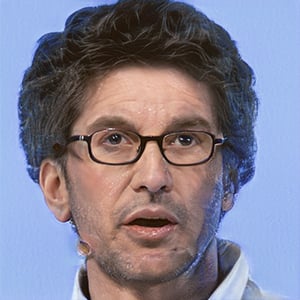Question :
A report is required to be made by considering leadership and management theories. Given case study of McDonalds will be considered for analysing impact of globalisation and others CSR issues.
- Explain different styles and theories of leadership and management.
- Evaluate constant changes that are happening in the business environment along with the factors that are driving globalisation.
- What are the main issues in business and management of McDonalds?
- Describe functional areas of McDonalds followed by operational hierarchy and strategies of management.
Answer :
INTRODUCTION
Leadership is an important aspect of business that there are many decisions are implemented by leaders according to the guidance of top level management to lower level management. In addition to this, the report will cover 3 levels of Morrisons and their responsibilities, including associated functional areas associated with roles and styles of leadership and management from theoretical perspective. Impact of globalisation and corporate social responsibility will be discussed in this report (Gill, Haider and Noreen, 2016). Apart from this, an McDonald's case study is also included which helps to understand various concepts of strategies and leadership styles followed by firm, use of corporate social responsibility and impact of CSR is also evaluated in this report.
Identifying and explaining the 3 levels of Morrisons and their responsibilities, including associated functional areas
It can be said that there are three management levels in Morrison’s such as top level management, middle level management and operational, supervisory or lower level management effectively (Lumen, 2017). The business functions are associated with these management levels which help to manage and control all the activities involved in operations as well as internal and external. In addition to this, the roles and responsibilities are also different for each level of management that helps to manage business and its operations.
Top level management: Top management such as board of directors, president, vice-president and CEO are responsible for managing top level activities in business in order to control the organisation effectively. There are some roles that are also considered by them such as developing goals, strategic planning, business policies, decision making and direction for Morrison’s. The top level management plays a significant role in mobilisation of outside resources efficiently. In addition to this, managers are accountable to the shareholders and public.
Middle-level management: Branch managers, general managers and other departmental managers are all examples of middle level management. The functions operated by middle level management are accountable to top management in Morrison’s effectively. Middle-level managers dedicate more time to business and directional functions than top-level management (Jones Christensen, Mackey and Whetten, 2014). There are several roles and responsibilities of middle level managers such as executing business strategies and plans with company policies and objectives of top management. They are mainly focused on guiding and directing lower level employees in order to drive their performances efficiently.
Lower level management: Employees, section leads, supervisors and foremen are some example of lower level management which are controlled and managed by middle level management according to the advice and decisions provided by top level management effectively. The lower level management is responsible for assigning tasks to employees, guiding and monitoring their day to day activities, ensuring quality and quantity of production and making recommendations in order to solve issues and conflicts that arise in between them. It can be said that lower level managers in Morrison’s are also referred as top level management as they provide basic supervision, career planning, staff supervision and performance feedbacks. This will help to manage and control operational activities as well as increase profitability.
In addition to this, vertical structure of business will help to develop and improve various business operations and functional units effectively (Choi, Ullah and Kwak, 2015). Thus, it can be said that roles, responsibilities and functions of all three levels in business will help to manage day to day activities as well as operations in order to produce effective outcomes that help to increase profitability and production.
Identifying and explaining the roles and styles of leadership and management from theoretical perspective
There are three types of leadership models such as Laissez-Faire Leadership, Autocratic Leadership and Participative Leadership which are described below in context of Morrison’s:
Laissez-Faire Leadership: This leadership is largely hands-off with supervision and minimal direction from the managers to the staff members effectively. Well trained and efficient directors are required to use this method who will work as intermediaries in between employees and business.
Autocratic Leadership: Autocratic leadership style has become something of a relic in current environment of business. The main reason behind that most of the workers work effectively without the overbearing presence of their boss. This leadership is a critical aspect and works better if balanced and managed properly with face time and feedbacks.
Participative Leadership: The leadership approach is to find a happy path between these two methods discussed above. Such managers back-off more in order to allow people to tap their creativeness and thinking independently using their own initiatives, while still maintaining enough control that helps to guide overall vision and mission of team without imposing their own vision on decision effectively (Veríssimo and Lacerda, 2015).
In addition to this, there are some leadership styles such as situational, transactional, transformational and strategic leadership. These are important for business in order to manage and control performance of employees that helps to drive performances (Barling, 2014).
Visit this page also
Dissertation Editing Services
Management Subjects
Law Subjects
Management model: Management model can be described as a choice for business and top executives in order to define efforts, objectives and coordinate activities that helps to allocate resources as well. In simple words, hoe thy are able to define administration work is known as management model. A business model helps to describe how a company is able to create, deliver and capture values in social, economical and cultural context. It is a part of business strategy which consider construction and modification known as innovation.
Management and leadership style of Mc Donald's: It can be said that leadership is an ability that helps to motivate and encourage employees in order to achieve their individual tasks. Mc Donald's manager and leaders work as a team in order to become great. Open communication, flexibility and attend Hamburger U helps to increase leadership skills effectively. This will also help to improve and develop profitability (Swanson, 2018).
Explaining relevant effects of globalisation facing Morrisons
Globalisation: Globalisation is a process in which other businesses develop international influences and start operating an international scale effectively. It is also a trend that helps to increase interaction between business and people on a worldwide scale due to the advancement in communication technology, transportation and telegraph effectively. It helps business to become increasing independent and integrated in order to drive performances and profitability.
Political: Political factors such as changes in unions or political parties will affect business operations in terms of inflation and tax rates which reduce operational activities' effectiveness. This will require changes accordingly to manage operations and profitability (Lee and Lambert, 2016).
Economical: Economic changes such as interest rates, foreign exchange rates and other economic factors such as growth patterns will also affect business and its operations in terms of rising rates due to the low economic growth and development.
Social: Social factors such as social environment, cultural trends, population analysis, demographics can affect demand and supply in terms of buying patterns. For an example in holiday session the demand will be high in countries like UK or US (Arevalo and Aravind, 2017).
Read Also:



















